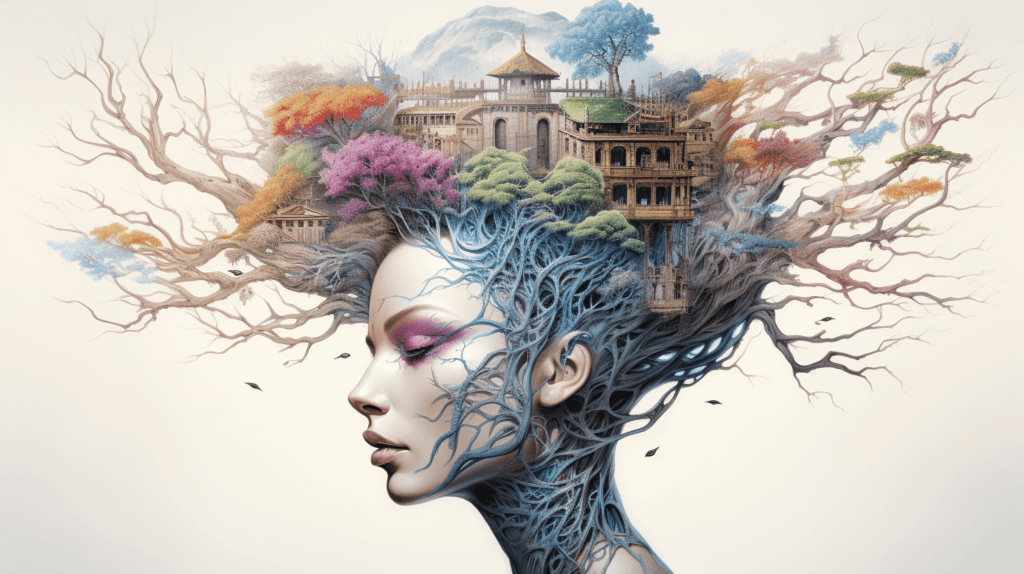Science
Mysterious 900-Year-Old Burials. What the Christian Graves Were Hiding
26 December 2025

Is it possible to establish a scale according to which one can estimate that a given object is a work of art? Shouldn’t the fact that we are moved by a particular image or piece of music be of sufficient value to us? – Katarzyna Sankowska-Nazawicz talks about beauty neurons and superstimuli in art with Diana Sałacka, spokesperson of the Copernicus Center for Interdisciplinary Studies at the Jagiellonian University in Kraków.
The author of a popular series on the Copernicus YouTube channel explains how exaggerated proportions, distortions or strong contrasts – i.e. so-called ‘superstimuli’ – affect our brain.
One of my favorite paintings is Edward Hopper’s ‘Nighthawks’. It depicts a melancholic scene taking place in a traditional American restaurant. I wonder what happens in my brain when I stand at the Art Institute in Chicago and look at this work.
Semir Zeki, a British neuroscientist and creator of neuroesthetics, claimed that it is possible to map areas in our brain which become stimulated under the influence of contact with art. He conducted a series of studies in which he recorded patterns of brain activity in people who admired images or listened to music. In the subjects, the same areas of the orbital cortex, prefrontal cortex and cingulate gyrus were activated. But does that mean we have found an area in the brain that is dedicated to experiencing beauty? That there are beauty neurons responsible for decoding art? We would like to have such simple answers, but unfortunately, such structures have not yet been detected. By analogy, we might expect to isolate areas in the brain responsible for the concepts we use every day, such as experiencing faith or a sense of justice.
It should also be remembered that what happens in the brain during contact with art is also greatly influenced by the context – meaning in turn the sum of differing factors – for example, we admire a specific painting in a unique environment, surrounded by other people, and we are affected by additional stimuli, such as music, strong light or twilight.
Today, however, we know for certain that our brains react strongly to so-called superstimuli, that is – translating into the language of art – to exaggerated proportions, distortions or strong contrasts. In short, the further away from the art performing the function of mimesis, the better.
The term ‘superstimuli’ was introduced to neuroesthetics based on observations of the behavior and learning process of animals. Many experiments were carried out for this purpose. In one of the more famous studies, rats were tasked with distinguishing squares from rectangles. Although they were rewarded in the same way, they reacted faster and more strongly to exaggerated, narrower and higher versions of the figures.
Read also:
I have heard of a similar study carried out on seagulls. A female comes to the nest with food and feeds the young, but what might seem like an idyllic family scene, in reality, is not. The chicks do not see the mother, her beak and the worm, but they react to a small element, the so-called trigger stimulus, that is, in the case of this species, it is a red spot on the beak. Ethologists painted two such spots on a wooden stick and gave the stick to the chicks, which in turn reacted to the ‘superbeak’ very violently, cried louder and constantly demanded food. So can it be said that if you build an art museum for birds, such a stick with two spots on it would be a superstimulus for them?
Definitely yes. Our neurons work in some ways similarly to the neurons of small gulls. For humans, superstimuli are, among others, Venus of Willendorf, an example of an exaggeration of female attributes, Van Gogh’s spiral landscapes depicting a night prospect, Salvador Dali’s works and famous melting clocks or disproportionate Hindu figurines depicting portraits of gods.
Research on superstimuli was conducted by two scientists from the University of California, Vilayanur S. Ramachandran and William Hirstein. They assumed that the purpose of art is not to convey the true image of the world, but rather to strengthen, transcend and even distort reality. Thanks to this, art provides special stimuli acting on our perceptual and emotional apparatus. The two scientists have compiled a list of eight qualities that distinguish esthetic perception from the way we look at the world daily. Among them are symmetry, contrast, grouping, isolation or visual metaphors.

Can you explain this with specific examples?
Imagine a Dalmatian lying in a room. To separate it from the background, we need to group its black dots into a whole. This binding of scattered stimuli, called grouping, stimulates our visual and limbic systems, thanks to which specific impressions are triggered. Grouping works well in the case of the reception of abstract art because it allows one to separate specific objects from the background.
The opposite of grouping is, in turn, isolation. Works that have this feature focus on the characteristic elements of a given person or object. An example would be Tom Cruise’s smile or Pippi Longstocking’s red hair and plaits. If we were given the task of painting these two characters, we would certainly know how to express their characteristics in a drawing, maybe we would even exaggeratedly present them, and we would treat the rest of the features at choice. But based on the perception of these chosen qualities, someone will say ‘that’s Tom Cruise!’, or ‘I know those plaits!’
It is interesting that among the rules distinguished by Ramachandran and Hirstein, except for those that assume the distortion of the world, there is also symmetry – a golden ratio, valued for centuries.
Many studies confirm that symmetry affects our species’ attractiveness. Symmetrical faces arouse more interest among newborns, and we generally consider them more attractive. Interestingly, animals also like symmetry. Evolutionary biologist Bernhard Rensch in his research has shown that animals much prefer regular shapes instead of asymmetrical ones. Why is this happening? Beauty scientists claim that symmetry affects the ease of processing information. Regular shapes, proportions or objects are predictable, ordered, in a word – easier to interpret.
Okay, but does this list of features mean that we have a ready recipe for a work of art?
No, it does not. However, both scientists have shown that superstimuli, or specific rules present in art, trigger a quick, instinctive response in us and activate our visual system much more strongly than objects found in nature.
Let’s go back to the aforementioned work by Hopper for a moment. When reviewers wrote that his paintings were melancholic, the painter replied: ‘I don’t paint sadness or loneliness, I just try to paint a light on the wall.’ His images, very realistic, do not deform reality, as Salvador Dalí did in his work. But his paintings are also intriguing, they affect our emotions.
Realistic images of Hopper do evoke sadness or melancholy in us, but I would not interpret them in the context of superstimuli. I would rather pay attention to another important mechanism that is activated during contact with art. It is about stimulating the reward system. Correlations have already been shown between the process of guessing ‘what the artist meant’ and what happens in our brain at the moment of solving the puzzle. We like this moment when we look at the picture, analyze it, and finally, we can say: ‘Eureka! That is what it was all about!’
The satisfaction is justified here because the interpretation of works of art is a difficult task. They are often located at a given historical moment, filled with symbols, entangled in various contexts. Ignorance of all these things will make us, instead of admiring a given work of art, pass indifferently by it. And it is the discovery of its subsequent layers that gives us great pleasure.
Let me give you an example. Without knowing the myth of Daedalus and Icarus, we will not understand Pieter Bruegel the Elder’s ‘Landscape with the Fall of Icarus’. Moreover, not knowing the context in which Icarus’ flight has been depicted in art so far, we will not juxtapose it with Bruegel’s intention. Icarus is an archetypal figure, symbolizing the flight to the Sun, idealism, but also the drama of the individual. And Bruegel’s painting is like the Flemish proverb: ‘No ploughman ceases working because of the death of a man. After all, no death changes anything, life goes on, and the Earth cannot suddenly stop.’
But it happens that even in knowing different contexts, we still fall for many puzzles. I am thinking now of the famous exhibition presenting the lost works of the French artist ‘Pierre Brassau’.
This is an interesting story. In the 1960s, a Swedish tabloid journalist set a trap for art critics. He came up with the idea of organizing an exhibition of paintings painted not by a man, but by a chimpanzee. He found a monkey that was not interested in paints and canvases at first, but in a short time learned that for the right number of smeared sheets, it gets a banana, and thus a collection of works was created. The day of the exhibition came, and esteemed critics came to the art gallery. The atmosphere was festive because the reason for the exhibition was unusual – finally, there was an opportunity to see the lost paintings of the respected French artist. In reality, however, it was about checking whether critics were able to distinguish true avant-garde contemporary art from the work of a chimpanzee.
Did the journalist manage to fool them?
Both yes and no. Many critics were strongly moved by the works and in the reviews appeared flowery statements about expressive brushstrokes or the fear in which we are immersed. However, the event did not take place completely without awkwardness, because there was one journalist who came out of this exhibition outraged, saying that ‘only a monkey’ could paint such things.
Is it comforting that there was at least one person who did not see the value in the works of ‘Pierre Brassau’?
For me, this story poses a different question. Is it possible to establish a scale according to which one can estimate that a given oeuvre is a work of art? Shouldn’t the fact that we are moved by a particular image or piece of music be of sufficient value to us? Do we necessarily have to give this value to the thing that moved us? Because if, for example, Paul Coelho’s ‘The Alchemist’ changed someone’s life, does that mean that this book should be singled out and everyone should read it? The same is true of the Nobel Prize in Literature. It happens that we read something that delights others yet does not stir any emotions in us ourselves. I think art can be treated the same way. Because, in essence, it is about our subjective experiences and specific strings that it will move in us. And that’s probably the most beautiful thing about it.
Diana Sałacka, a press spokesperson for the Copernicus Center for Interdisciplinary Studies at the Jagiellonian University in Kraków, is interested in poststructuralism, architecture and language theory. The author of the series „No to pięknie!” (‘How beautiful!’) on the Copernicus YouTube channel.